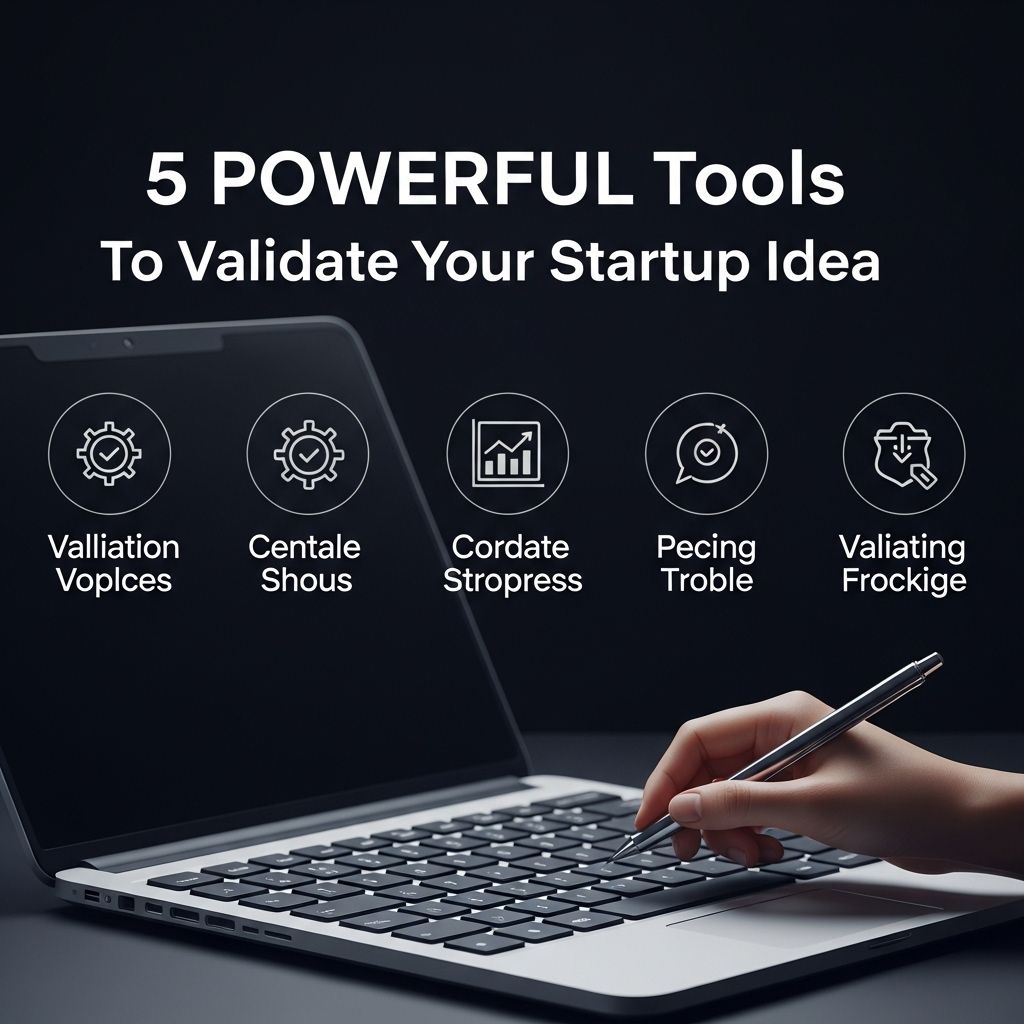In the fast-paced world of startups, the journey from an idea to a thriving business can often feel daunting. Many aspiring entrepreneurs find themselves wondering if their ideas are truly viable or if they are merely chasing a dream. This article explores the steps I took to validate my startup idea, providing insights and strategies that can help other entrepreneurs embark on their own validation journeys. By leveraging market research, customer feedback, and various testing methods, I was able to refine my concept and build a foundation for success.
Understanding the Importance of Validation
Before diving into the validation process, it’s essential to understand why it matters. Validating your startup idea helps you:
- Identify potential market demand
- Refine your target audience
- Understand user needs and pain points
- Reduce financial risk before launching
- Enhance product features based on feedback
Step 1: Conducting Market Research
1. Analyzing Competitors
The first step in validation was to analyze the competitive landscape. By identifying who my competitors were, I gained insights into their strengths and weaknesses. This exercise helped me determine where my idea could fit into the market. I created a competitive matrix, which included:
| Competitor | Strengths | Weaknesses |
|---|---|---|
| Competitor A | Strong brand presence | High pricing |
| Competitor B | Innovative features | Poor customer service |
| Competitor C | Wide distribution | Limited product range |
2. Identifying Market Trends
Next, I delved into current market trends to establish whether my idea was aligned with consumer interests. I used various online resources such as industry reports, news articles, and social media analytics to understand what consumers were talking about. Key trends I identified included:
- Sustainability and eco-friendly products
- Increased demand for convenience
- Remote work solutions
Step 2: Defining My Target Audience
Understanding who my potential customers were became crucial at this stage. I created detailed customer personas that captured demographics, preferences, and behaviors. This included considerations such as:
- Age range
- Geographic location
- Income level
- Interests and hobbies
Step 3: Gathering Customer Feedback
1. Surveys and Questionnaires
I launched online surveys and questionnaires to gather direct feedback from potential users. Platforms like SurveyMonkey and Google Forms were instrumental in collecting data efficiently. My survey included questions such as:
Sample Questions:
- How often do you use similar products?
- What features do you value the most?
- What would make you choose our product over others?
2. Conducting Interviews
In addition to surveys, I conducted one-on-one interviews with selected participants. This qualitative method allowed me to gain deeper insights into customer motivations and challenges. I learned about:
- Frustrations with current solutions
- Desired product improvements
- Initial reactions to my idea
Step 4: Building a Minimum Viable Product (MVP)
With the feedback collected, I moved forward with developing a Minimum Viable Product (MVP). This version of my product included only the essential features needed to solve a core problem for users. The MVP served several purposes:
- Testing functionality in real-world scenarios
- Gaining further user feedback
- Attracting potential investors and early adopters
Step 5: Testing the MVP
1. User Testing
I invited a small group of users to test the MVP and provide feedback. During this phase, I monitored how they interacted with the product and collected their thoughts on usability and performance. Key areas to focus on included:
- User interface experience
- Feature usability
- Overall satisfaction
2. Iterating Based on Feedback
Using the feedback from user testing, I iterated on the product by making adjustments and enhancements. This process highlighted the importance of:
- Being open to criticism
- Understanding user preferences
- Continuously improving the product
Step 6: Building a Community
As I continued to refine my startup idea, building a community around it became essential. Engaging potential customers through social media, forums, and newsletters allowed me to:
- Build anticipation for the product launch
- Gather ongoing feedback
- Create brand advocates who would promote the product
Conclusion
Validating my startup idea was a multifaceted process that required dedication and strategic planning. By conducting thorough market research, gathering customer feedback, and testing an MVP, I positioned my startup for a better chance of success. Each step in this journey reinforced the importance of understanding the market and being responsive to user needs. For aspiring entrepreneurs, remember that validation is not a one-time task but an ongoing process that continues even after launch. Embrace feedback, iterate on your product, and stay connected with your audience to build a successful business.
FAQ
What steps did you take to validate your startup idea?
I conducted market research, surveyed potential customers, and analyzed competitors to understand demand and refine my concept.
Why is validating a startup idea important?
Validating your startup idea helps ensure there is a market for your product or service, reducing the risk of failure.
What tools can I use for startup idea validation?
Tools like Google Trends, SurveyMonkey, and social media polls can help gauge interest and collect feedback.
How do I know if my startup idea is worth pursuing?
If your validation efforts reveal a strong demand and positive feedback from potential customers, it’s a good indicator to pursue your idea.
What are common mistakes to avoid when validating a startup idea?
Common mistakes include relying solely on friends and family for feedback, not defining your target audience, and ignoring negative feedback.
How long should the validation process take?
The validation process can vary, but it typically takes a few weeks to a couple of months, depending on the complexity of the idea and the research methods used.



